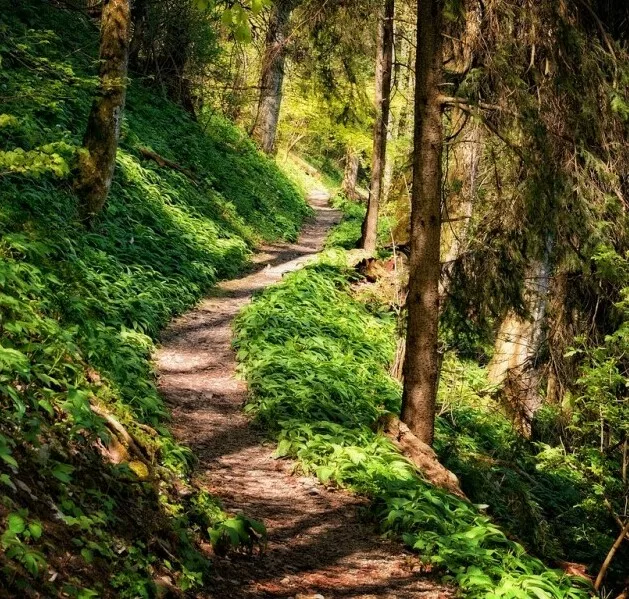Tips for a Safe and Eco-Friendly Adventure
Embarking on a wilderness adventure requires careful planning, especially when it comes to selecting the perfect campsite. Whether you’re an experienced outdoorsman or a novice camper, choosing a suitable spot is crucial for your safety and to minimize your environmental impact. I remember one trip in particular. I had gone out with a couple of friends for a three-day hike. After day 1 we set up camp for the night. Well, it rained later on in the night and guess what happened to my tent. It got flooded. I happened to pitch my tent in a clear area that just happened to be a natural wash. The rain gathered and ran right down where I was camped and flooded my tent. thank goodness my gear was packed in a waterproof pack or I’d have been miserable for two days. Oh well, live and learn. Here’s a comprehensive guide on how to choose a wilderness campsite that aligns with “Leave No Trace” principles and ensures a memorable outdoor experience.

Where to Camp:
Legal and Low-Impact Campsites
When venturing into the wilderness, it’s essential to choose campsites that are both legal and designed to have minimal impact on the environment. Always check the rules and regulations for the specific area you plan to visit. This will help protect the natural habitat and ensure that you’re camping responsibly.
Unregulated Camping
In areas where camping is not regulated, follow these guidelines to minimize your footprint:
- Use Established Campsites: Whenever possible, camp in well-established sites that have already been impacted.
- Durable Surfaces: If no established sites are available, choose durable surfaces such as rock, gravel, or bare soil. Avoid areas with vegetation or near hazardous trees.
- Distance from Water and Trails: Camp at least 200 feet away from water sources, trails, and other campsites to protect wildlife habitats and reduce the chance of disturbing other campers.
- No New Campsites: Avoid creating new campsites or using lightly impacted or closed ones. Restrict all activities to the campsite’s core barren or durable area.
In popular areas, use well-established campsites that are marked on maps, signs, or camping apps to reduce the risk of damaging sensitive areas.
Regulated or Designated Site Camping
In highly trafficked areas, designated campsites may be available and sometimes require permits or reservations:
- Advance Planning: Obtain any necessary permits or make reservations in advance to secure your spot.
- Stick to Your Itinerary: On multi-day trips, stick to your planned itinerary to ensure you arrive at reserved campsites as scheduled.
- Arrive Early: For first-come-first-serve sites, arrive early to secure a spot.
- Avoid Non-Designated Sites: Camping outside of designated areas can result in fines and increased environmental impact.
Remote Camping – Being Invisible
For seasoned campers venturing into low-use areas, practicing invisibility is key:
- Choose Durable Areas: Select durable, out-of-sight locations with no prior human disturbance for a single night’s stay.
- Minimal Impact: Use hammocks instead of tents to minimize plant trampling and ensure that the site shows no signs of your presence once you leave.
Good or Bad Campsites:
Bad Campsite Examples
- Bedrock Campsites: These are often close to water, have limited space, and pose risks to vegetation and pollution.
- Enlarged Campsites: Can become noisy, crowded mega sites that disrupt the natural environment.
- Illegal Lakeshore Campsites: These are too close to water, risking pollution, especially during rainstorms.
Good Campsite Examples
- Sustainable Campsites: Have a small footprint and are located on durable surfaces.
- Vegetated Campsites: Sunny meadows with grass, which resist and recover from trampling better than leafy plants.
Tips for Choosing Campsites:
- Hidden Legal Campsites: Look for sites that are further from lakeshores and adhere to setback guidelines.
- Meadow or Shaded Forest Sites: Use non-vegetated leaf litter areas that are out of sight from trails and other campsites. Fully restore the site before leaving to ensure quick recovery.
Choosing the right wilderness campsite is about more than just finding a place to sleep; it’s about respecting nature and ensuring that future generations can enjoy the same pristine environments. By following these guidelines and adhering to Leave No Trace principles, you can make your wilderness adventure both safe and sustainable.
Happy camping!
For more tips and gear reviews, stay tuned to wildnfreewanderer.com!